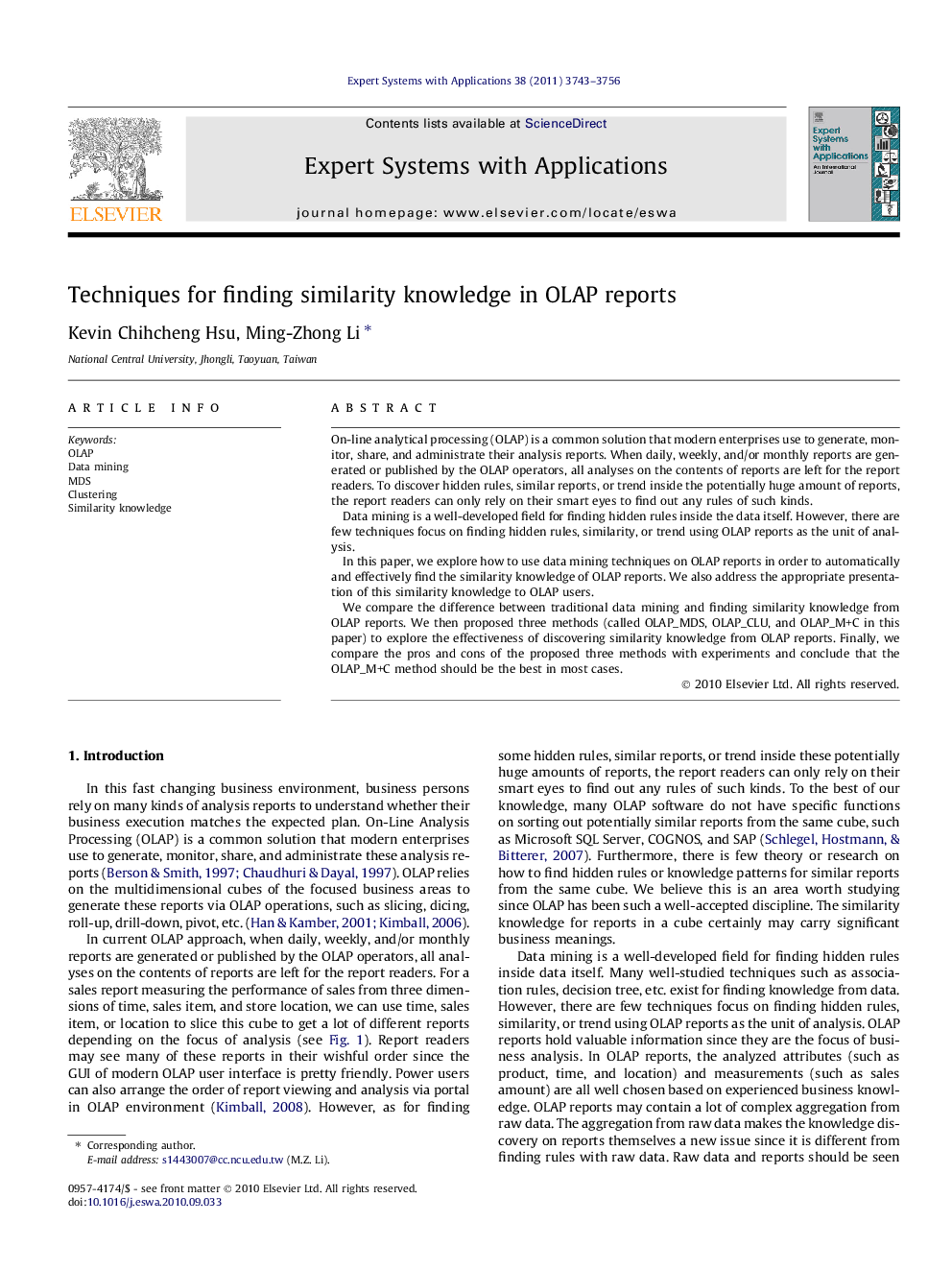| Article ID | Journal | Published Year | Pages | File Type |
|---|---|---|---|---|
| 386036 | Expert Systems with Applications | 2011 | 14 Pages |
On-line analytical processing (OLAP) is a common solution that modern enterprises use to generate, monitor, share, and administrate their analysis reports. When daily, weekly, and/or monthly reports are generated or published by the OLAP operators, all analyses on the contents of reports are left for the report readers. To discover hidden rules, similar reports, or trend inside the potentially huge amount of reports, the report readers can only rely on their smart eyes to find out any rules of such kinds.Data mining is a well-developed field for finding hidden rules inside the data itself. However, there are few techniques focus on finding hidden rules, similarity, or trend using OLAP reports as the unit of analysis.In this paper, we explore how to use data mining techniques on OLAP reports in order to automatically and effectively find the similarity knowledge of OLAP reports. We also address the appropriate presentation of this similarity knowledge to OLAP users.We compare the difference between traditional data mining and finding similarity knowledge from OLAP reports. We then proposed three methods (called OLAP_MDS, OLAP_CLU, and OLAP_M+C in this paper) to explore the effectiveness of discovering similarity knowledge from OLAP reports. Finally, we compare the pros and cons of the proposed three methods with experiments and conclude that the OLAP_M+C method should be the best in most cases.
Research highlights► OLAP reports are important source for knowledge discovery. MDS and clustering analysis can be applied on OLAR reports for finding similarity knowledge. ► OLAP_MDS provides an overall perspective to see the pair-wise distance among any two OLAP reports. OLAP_CLU provide good clustering information for OLAP reports. ► OLAP_M+C integrates the advantages of OLAP_MDS and OLAP_CLU. It not only provides an overall perspective to see the pair-wise distance among any two OLAP reports but also automatically gives the clustering information. When the fitness of OLAP_MDS is good enough (s-stress < 0.1), the enhanced MDS scatter plot from OLAP_M+C should be the best output to display the similarity finding of the analyzed OLAP reports.
